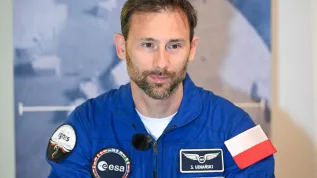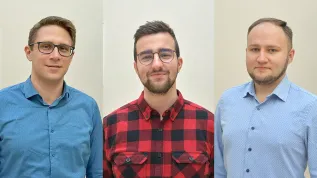
A numerical model of a two-year-old child’s head has been developed by Wrocław scientists and researchers to see exactly what happens following a strong blow.
The algorithm will help develop more accurate tests when designing, among other things, bicycle helmets.
Dr. Mariusz Ptak from the Department of Machine Design and Research at the Faculty of Mechanical Engineering of the Wroclaw University of Science and Technology said: "A numerical model is a code that enables calculating data after a mechanical load on the brain, it knows the characteristics of its individual elements: meninges, cerebellum, cerebral veins or cerebrospinal fluid.
“Thanks to the data we have entered, the program knows which parts of the brain are more, and which are less rigid, it knows their density. It shows us what happens in the brain, what the pressure is, it shows displacement and finally injuries.”
Scientists mapped out the model based on MRI data of the magnetic resonance imaging of a group of two-year-old children with help from neurosurgeons from the University Clinical Hospital in Wrocław and the Provincial Specialist Hospital in Legnica.
They collected MRIs and then on their basis prepared averaged data on individual elements of the head. The team also obtained helpful information from the Lower Silesian Specialist Hospital in Wrocław.
The researchers decided to develop a model of two-year-old child`s head because this is the time when children are already active. They are exposed to various types of injuries that can be prevented by modelling safety systems such as helmets or hats.
Dr. Mariusz Ptak said that today during helmet tests a metal ball with an acceleration sensor is inserted into the helmet model. The sensor measures what happens when, for example, a ball is dropped from a height of 1.5 meters. However, it primarily takes into account the registered accelerations.
He said: "We want to do it in a completely different way. The manufacturer sends us a helmet. We scan it in 3D technology, possibly with a technical x-ray, and we get a computer model of the helmet with its geometrical properties, and then we add information about the materials it is made of.
“We add our numerical model of the head of a child. The process of dropping or hitting is computer simulated. We see the movement of the brain, brain tissues, cerebrospinal fluid and other elements that we know nothing of when we drop a steel ball.”
He added: "This simulation allows us to check the behaviour of individual tissues during an accident, especially the passing of a stress wave. Thanks to this, we know what happens in the brain during an impact. Why injuries occur in certain places and why they have certain sizes.”
Scientists also plan to build head models for middle-aged and elderly people. All models will be used in simulations of road accidents. They can also help to design better bike, motorcycle and winter sports helmets.
The model was developed as part of the aHEAD project, co-financed by the National Centre for Research and Development.
PAP - Science in Poland, Ewelina Krajczyńska
ekr/ agt/ kap/
tr. RL













